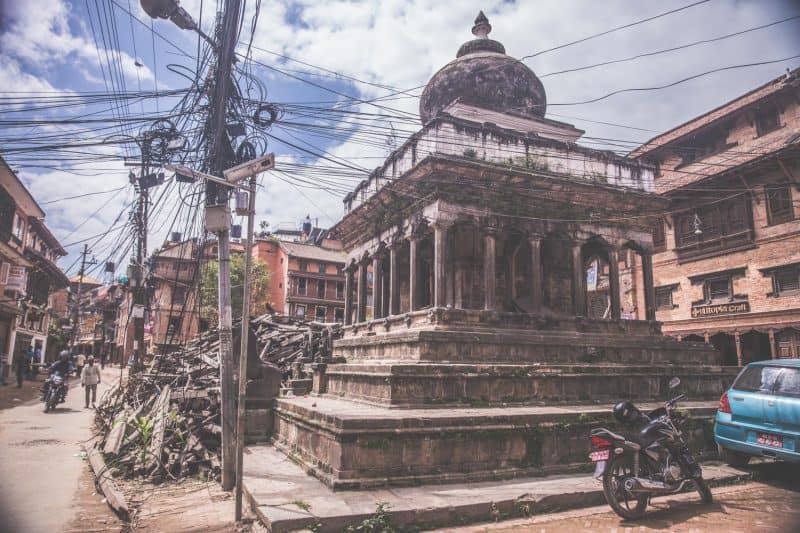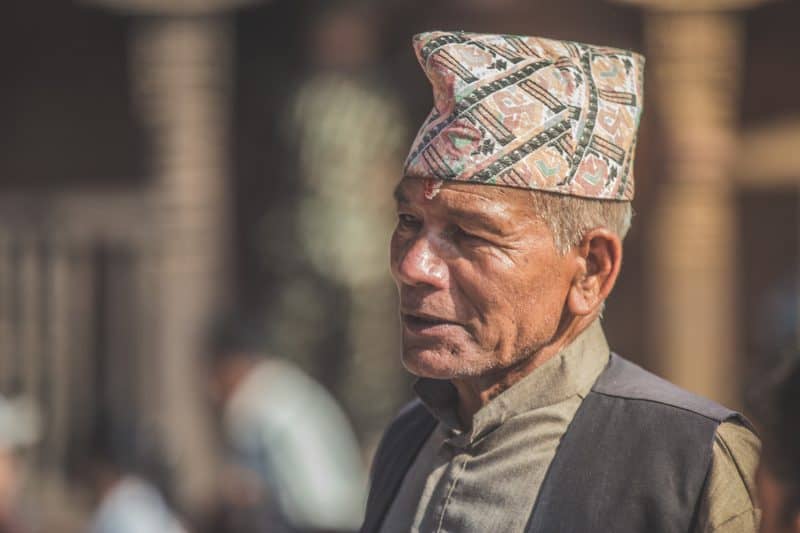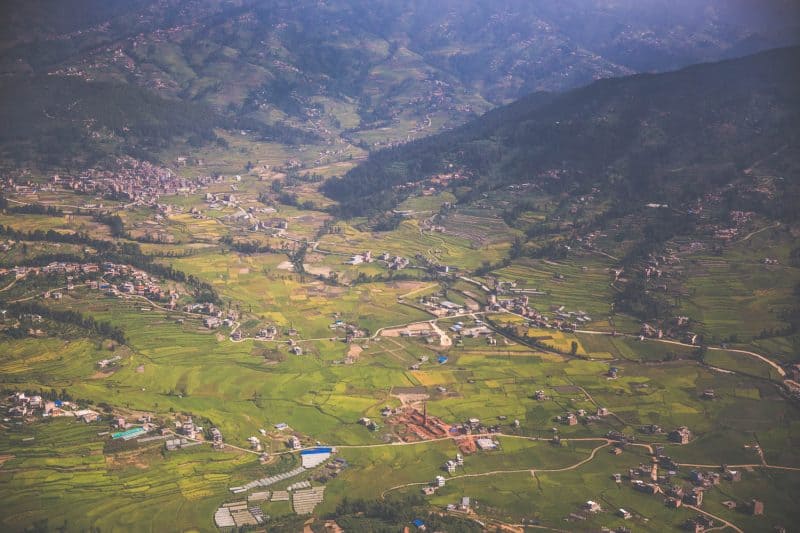The 25 April 2015 earthquake that struck Nepal was its worst natural disaster since 1934, killing more than 8,000 people. Katy Dartford treks through the country to see how it is rebuilding, and how tourism can aid the recovery
The Kumaris sprinkle flower petals on to the crowds gathered in Kathmandu’s historic Durbar Square. Dressed in red and with symbolic ‘fire eyes’ on their foreheads, these pre-pubescent girls are worshipped as divine manifestations of female energy. All around me thousands of Nepalese climb on piles of rubble in the hope of catching a glimpse of them.
It’s the start of the eight-day Indra Jatra festival, which pays tribute to the rain god Indra and marks the start of the new trekking season after the monsoon. The Kumaris, who are normally isolated from society, are carried across the city in golden chariots. Masked dancers representing deities and the tiger-toothed Bhairava, a demon associated with destruction, parade in time with drums.
It’s a particularly poignant sight because on 25 April 2015 the palace was gouged open when a 7.8 magnitude earthquake struck Nepal, killing more than 8,000 people and leaving hundreds of thousands homeless. Tourist arrivals dropped by 90 per cent in the six months after the earthquake, a double blow to the locals who rely on visitors for their livelihood.
I’m here to see first-hand how the country is recovering. My plan is to trek part of the route to the Mount Everest base camp over a few days to report on how reconstruction is progressing.
Nepal has a diversity of mountains, jungles, savanna and cultures. The key is to explore them in a way that’s sustainable
Walking through Kathmandu, I find the spirit of the city very much alive. I’m surrounded by a maze of fragrant spices, jingling bells, tuk tuks, and tiny shops selling anything from masala chai to pashminas. Deeper into the mountains, I encounter the towering peaks, ancient temples and kindness of the Nepalese people that define this country.
The small trekking group I join travels to the village of Namche Bazaar, the gateway to Everest, where we are to spend the night before setting off. We head to my favourite trekkers bar, Daphne, where the walls are decked out with T-shirts signed by expeditioners from years gone by. The barman introduces himself as Jack (Jagadish). “We’ve not even had 40 per cent of the people, and it’s not because of the earthquake, it’s because of the media,” he says. “Europeans believe that Nepal is not safe, but actually, everything is operating over here.”
An ongoing fuel crisis is the country’s main concern, according to Jagan Timilsina, who leads treks to Everest base camp. “We do not have fuel for transportation, no gas for cooking. People are having a difficult time.”
After Nepal’s new constitution was passed in September 2015, a shipment of essential supplies from India – the provider of all of Nepal’s petroleum products – was blocked by ethnic minority groups, opposed to the constitution. Nepalese politicians have accused India of supporting the blockade, which India firmly denies.

Getting Nepal back on track
The next morning we take a path leading to the white spire capped rotunda of the shrine built for Tenzing Norgay Sherpa, who along with Sir Edmund Hillary became the first person to summit Everest in May 1953. Prayer flags draped around the building flutter in the wind like multi-coloured leaves. Beyond the shrine a large scar stretches above our path, carved by the earthquake. Further along are more scars, and two local men chip away with simple tools, cutting stones to make a new road.
The tour operator, Intrepid Travel’s Nepal general manager Nicholas Cowie, lives in Kathmandu and intimately understands the earthquake’s devastation. He says a report by earthquake engineering specialists Miyamoto International found there was minimal damage to the majority of accommodation and trails in the Everest and Annapurna regions. Of the buildings that were damaged, most could easily be repaired. Standing on a ridge above the shrine with Ram Moktan, our lead trekking guide, I can see the magic of the mist-shrouded ravines and sky-piercing peaks of the Himalayas hasn’t changed, though the number of visitors has; we pass barely a handful of foreign trekkers. “The best thing people can do now,” Moktan tells me, “is to come back”.
We spend the following night at 2,652 metres, at Phakding, having passed through some of the worst-affected stretches of the trail. At Tok Tok, rock fall blocks a section of the trail near the Dudh Khosi river. But landslides here are nothing new, and we navigate it successfully. Passing through Benkar we see a guesthouse with its modern half intact, but a 50-year-old section collapsing under the weight of its traditional stonewalls and roof. Cowie explains that the buildings are being repaired using cement, reinforcing steel and local stone stacked to create friction so they can move but are still solid.

The following morning we fly back to Kathmandu to visit some NGOs doing on-theground work. At Seven Women, disadvantaged and disabled women are taught literacy, numeracy, and handicraft skills. At Just-one, which supports around 100 children living on the streets, they tell us: “If you want to help these children, don’t give them money, give it to community projects instead.”
Nepal remains a destination that amazes, intrigues and sometimes shocks. But the country is at a crossroads. “It can continue offering the same trekking routes or begin to think outside of the box,” Cowie says. “Nepal has a diversity of mountains, jungles and savanna that are largely unexplored. The key is to explore them in a way that’s sustainable – environmentally, economically and socially.”
I think back to the colours of the Indra Jatra and the view across the Himalayas. There will be more earthquakes, they are what created the famous peaks, but, Cowie shrugs, “where there is no risk, there is no life.”

Intrepid (0808 274 5111) is donating all profits from the 2015/16 trekking season to the Nepal rebuild. A 15-day Everest base camp trek through the Himalayas costs from £748 per person, including local flights and accommodation. International flights not included.
Photography by Ben McNamara. Main image: Crowds gather for the first Indra Jatra – Nepal’s largest annual festival – since the catastrophic earthquake in April 2015
